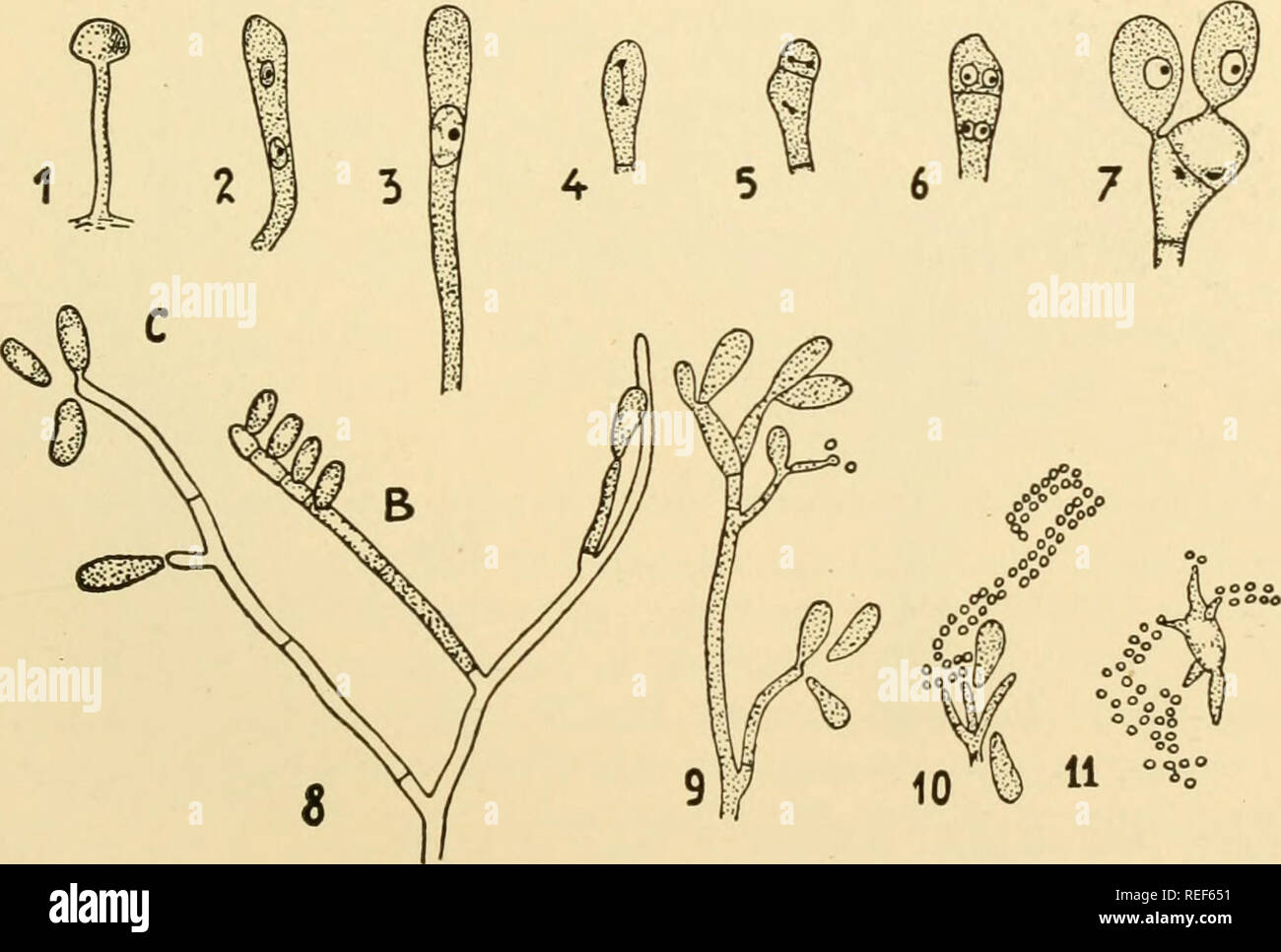. Comparative morphology of Fungi. Fungi. AURICULARIALES 549 before spores are produced on the lateral sterigmata, reminding one of the conditions found in some smuts. In S. Michelianum (Kiihner, 1926) the uninucleate basidiospores germinate with a short sterigma which bears a secondary spore only slightly smaller than itself. This becomes three to six septate and produces one to two very small, ellipsoidal conidia from each cell. The binucleate basidiospores form a septum between the nuclei then germinate as above. The morphological significance lies in the increasing differentiation of the z

Image details
Contributor:
The Book Worm / Alamy Stock PhotoImage ID:
REF651File size:
7.1 MB (206.4 KB Compressed download)Releases:
Model - no | Property - noDo I need a release?Dimensions:
1925 x 1298 px | 32.6 x 22 cm | 12.8 x 8.7 inches | 150dpiMore information:
This image is a public domain image, which means either that copyright has expired in the image or the copyright holder has waived their copyright. Alamy charges you a fee for access to the high resolution copy of the image.
This image could have imperfections as it’s either historical or reportage.
. Comparative morphology of Fungi. Fungi. AURICULARIALES 549 before spores are produced on the lateral sterigmata, reminding one of the conditions found in some smuts. In S. Michelianum (Kiihner, 1926) the uninucleate basidiospores germinate with a short sterigma which bears a secondary spore only slightly smaller than itself. This becomes three to six septate and produces one to two very small, ellipsoidal conidia from each cell. The binucleate basidiospores form a septum between the nuclei then germinate as above. The morphological significance lies in the increasing differentiation of the zeugites which, here for the first time in semiparasitic forms, attain the height of development of teliospores. Consequently Cystobasidium and Septobasidium form an important approach to the Uredinales. Conidial fructifications have only been observed in S. albidum from the East Indies (Patouillard, 1913). The hyphal tips are differentiated into hyaline, later colored oidia (Fig. 366, 1). Phleogenaceae.—As in the other families of the Auriculariales, this family begins with gymnocarpous forms, although here the higher. Fig. 367.—Stilbum vulgare. 1. Fructification. 2 to 7. Development of basidia. Hoehneliomyces delectans. 8. First basidium appearing on conidial hyphae. C, conidium; B, basidium. 9, 10. Macro- and microconidia, the latter catenulate. 11. Germination of basidiospore with short hyphae, producing catenulate microconidia. (1 X 33; 2 to 7 X 1, 320; 8 to 11 X 330; after Juel, 1898, and Moller, 1895.) members are angiocarpous. The basidia arise irregularly within definite layers which correspond to the gleba of the angiocarpous Basidiomycetes. The basidia lack sterigmata. In Stilbum vulgare (Juel, 1898) the fructification is scarcely more than a well-developed coremium, with the erect hyphae held together by. Please note that these images are extracted from scanned page images that may have been digitally enhanced for readability - coloration and appearance of these i